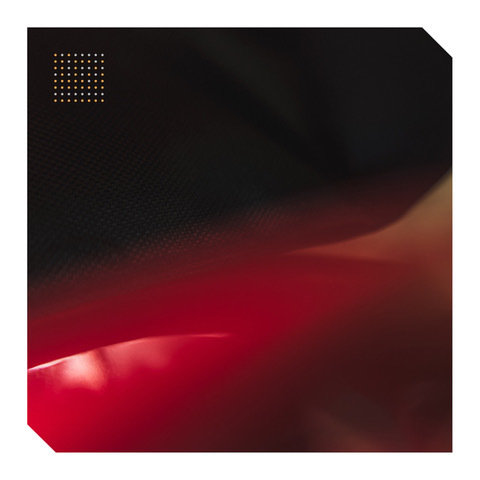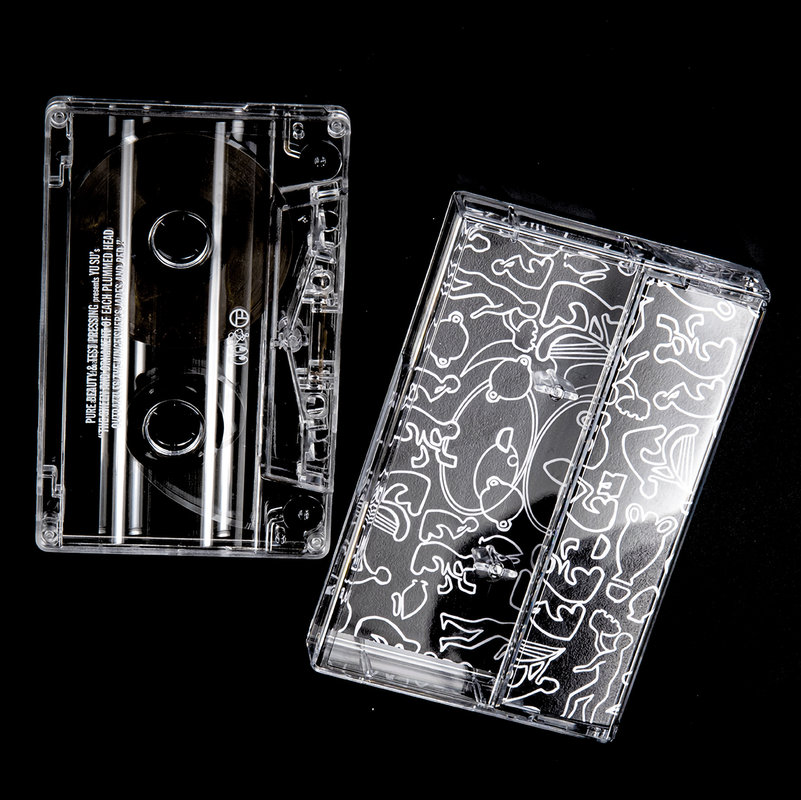My inbox got a bit swamped with trying to do 800 things at once at the end of this year so apologies for not being as on it as I should be if you sent anything over but Invisible Inc sent this one which got my interest as its a modular synth based release - a world I first got lost in during the first lockdown.
Ty Lumnus, the artist in question, quietly gets on with his own modular explorations in a style we fully endorse. No hyperbole or insta shouting just putting it out there. As far as making music goes I'd personally say modular is the most fun you can have in a hands on fashion in the studio. It's a mainly beautiful world of creators of nuts modules that you plug together with wires and makers who plug these wires in whatever order they fancy.
We took the opportunity to ask Ty a few questions on how he approaches the modular world and his making of music. If you want to see more please head to Ty's YouTube channel and you can follow him there.

What was your entry point into modular? Did you go the semi modular (0 Coast) route or did you get into it another way?
I had 2 semi modular synths, an MS-20 and an Erebus. I spent quite a lot of time in Rubadub, my local synth shop, and the person I always spoke to (Aleks) had been encouraging me down that route for a while. I eventually bit the bullet around 6 years ago. My first purchase was all-in and it was a life changing experience for me musically.
What were your first modules?
Make Noise - Rene, DPO, Wogglebug, Maths and a WMD - Pro Audio. I took a great deal of advice from Aleks on what to get and why. I also tried out things in the shop.
What was the first case you bought?
Dreadbox 6U 84HP - again steered by Aleks. This case was fabulous as a starter as firstly it was well priced, but it was also a few things in one - it had power built in for a start as well as a decent helping of utilities (LFOs, attenuators, midi converter, mixer).
How do you sequence?
I use ALM Busy Circuits Pamela's New Workout as a clock for my whole system. I've 2 cases. I refer to them as the percussion case and the synth case. For my synth case I use a Winter Modular Eloquencer as my core sequencer. There's also a Turing Machine and a Noise Engineering Clep Diaz in that case that I quantise through the Eloquencer. In my percussion case I use a mix of Grids and some standard clocks from Pams.
Do you use a computer alongside to edit or are these pure analogue recordings?
When I play I always record snippets into separate channels in Ableton. I have a Befaco Hexmix + expander in both cases so I can take a clean line from all instruments straight into Ableton.That way I always catch a bit of every jam I do and can rebuild/arrange if a tune pops out. In the home studio, a laptop and Ableton are an integral part of my setup. Workflow is super important to me as I don't want to stop and setup something different if I hit on something I want to record. I just want to poke that red flashing button and capture the moment - and to keep doing that as a session evolves.
How do you arrange if so? Is it a case of utilising a mixer on the fly?
I'm not sure if you mean how do I arrange my gear or how do I arrange a tune so here's both:
Arranging my gear: I've 12 mono tracks and two stereo tracks coming out of my modular system (16 tracks all in). I use a Motu 828 to take these into Ableton (8 down a light pipe using Expert Sleepers gear and 8 analog). They all have a track each in Ableton. The 12 mono tracks are the clean channels from my modular. The two stereo pairs are the master tracks if you like, complete with send/return effects from each case. When I monitor I only listen to the master tracks but when I record I'm capturing everything - all 16 tracks.
Arranging a tune: I don't do anything too complicated. It's all loop based around the eloquencer, usually up to 16 steps, but rather than all channels of the sequencer running at 16 steps I adjust both the step length and the track speed of the individual tracks to different degrees. So what started out as a simple loop that repeats every 16 steps now takes 100s of steps before it repeats, For example, I always have the Turing machine running on 5 steps. Some track lengths are 7 or 13 steps. Some tracks are running at 1/4 speed or 1/2 speed and so on. Sometimes I'll use a Euclidean sequence out of Pams for the kick.
As I mentioned above, I've a 6-channel mixer in each case and tend to mix on the fly to what ever I like the sound of. In the synth case there's at least a filter and an envelope on each VCO and there's 3 send/return to different effects. All in that's a huge amount of variation to play with in quite a short space of time. My first priority is to create tracks that engage and bounce off each other. For the last 6 months or so I've been using two bass lines: one on the Erica Synths bassline and the other Bus2 of DPO. They often start out sounding like one line then split out using modulation of the cut off or the envelope etc. They play off each other then recombine over longish periods. There's usually a slow evolving pad in there and a couple of randomised 5 or 7 step harmonies drifting in and out from Instruo's Cs-L and Ts-L.
What's the module you most enjoy using?
Wow! That's a tough one. The power of modular is that you create more interesting sounds the more you combine so there aren't really any individual modules that really stand out. If forced to I'd possibly say DPO. It's my first VCO and I'm still finding out new things about it - new sounds, textures etc. Also, love Akemie's Taiko - its always on rattling/glitching away in the background but I put it through a Wasp filter, in lowpass at quite a low frequency only bringing up the frequency when I want it to be a bit further forward in the mix.
What's the module you didn't expect to love as much as you do?
I don't think I've ever bought anything I didn't think I was going to love. Modules are way too much of an investment to get wrong. I have got it wrong though - Morphagene and BIA - not for me. Everything I buy is researched before purchasing (boring I know). Actually, thats not quite true as I bought Akemie's after too much red wine. The Reverb messages the next morning..... all "congratulations, you've won" etc were a bit of a shock. Ok - I'll go with Akemie's for this answer purely because I didn't know too much about it but as soon as it went in I realised it was a keeper.
What's the next stage for your setup?
I saw images of Martin Gore's modular room and thought 'I want that' but I know for a fact I've barely scratched the surface of what I have. I've two very substantial cases and it is more than sufficient. I want to get better with what I have than get a bigger setup [read: I'll have two more cases by this time next year]. I'll likely continue to swap bits out (as both cases are full) as and when I spot something I'd like to try. When doing live streams from my home studio I feed to OBS via Ableton. This allows me the luxury of adding some light touch mastering effects (analogue warmth, m/s split, etc). That is something I miss when not going through a laptop when playing live. So, I might explore an OTO Boum or Analogue Heat for my live setup.
Finally, are you taking it live?
Yes - absolutely. When I produce I'm always thinking about how I can do it live. The arrangement process I described above is how I create a tune originally. Once I'm happy I save the CV and gate info to the Eloquencer so when I'm playing live I've a skeleton of a starting point. When I'm building a live set, I decide in advance which of the sequences I'll use and save them to a single bank for easy recall during the performance. A big mistake I used to make when playing live was to attempt to reconstruct a tune as I'd previously recorded or performed it. So I used to try and remember when to bring certain parts in and out, and what settings I used etc.
That was hugely stressful and often detracted from the performance. It was an exercise in remembering a score and recreating it: mechanical and predictable. Furthermore, it rarely worked. What I do now is try to have confidence in the sequences I decided to use for that performance and just to play them. Bring in parts and shape them until I'm happy then bring something else in. The majority of the time I don't actually know what's about to happen, but I know that it will work once it's all in place. Like building a jigsaw - it doesn't make too much sense with only one piece in place, but it starts to come together once the other parts come into play. I'm usually a few minutes into a sequence when I recognise it and have a 'ahhhh it's that one!' moment.
The Ty Lumnus release is available via the Invisible Inc Bandcamp. The label (Invisible Inc) are good people making good moves so we recommend a dig about while you are there. Follow Ty Lumnus on Ty's YouTube channel HERE.


